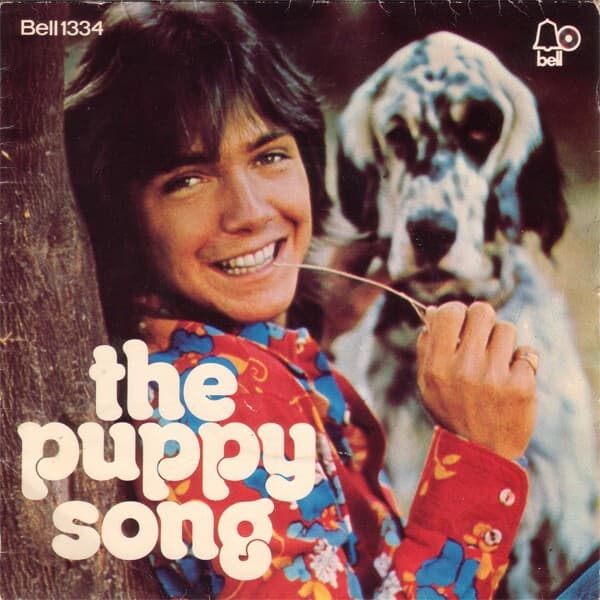
A Sweet, Innocent Longing — The Puppy Song by David Cassidy
The Puppy Song is a tender reflection of wishful innocence, yearning for simple joys and pure companionship. When David Cassidy released The Puppy Song in 1973—as part of a double A-side single with Daydreamer—it soared to No. 1 on the UK Singles Chart, holding that spot for three weeks. The single enjoyed a 15-week run on the chart, cementing itself as one of Cassidy’s most beloved hits of the era.
In its origins, The Puppy Song was written by Harry Nilsson, first appearing on his 1969 album Harry. Nilsson had composed it earlier, at the behest of Paul McCartney, for Mary Hopkin to record. Nilsson’s version is tender and slightly wistful, but when Cassidy took it on, something changed — his youthful voice, brimming with gentle sincerity, lent the song a warmth and dreamy optimism that struck a deep chord with his audience.
Cassidy’s recording was produced by Rick Jarrard, who had previously worked with Nilsson himself. According to sources, it was Jarrard’s suggestion that Cassidy record Nilsson’s song, and that decision paid off in a big way—not just because the single reached number one, but because it also inspired the title for Cassidy’s album Dreams Are Nuthin’ More Than Wishes. In fact, the opening line of the song—“Dreams are nothin’ more than wishes / And a wish is just a dream you wish to come true”—became the album’s guiding sentiment. That album, released in October 1973, itself climbed to No. 1 on the UK album chart, a testament to how much Cassidy’s fans embraced this dreamy, youthful collection.
The decision to pair The Puppy Song with Daydreamer was more than a promotional tactic—it showed the duality of Cassidy’s appeal. On one hand, Daydreamer is wistful and romantic; on the other, The Puppy Song is affectionate in its simplicity, almost childlike in its desire for innocence and untroubled love. The single’s flip-side status helped both songs shine, and in many ways, The Puppy Song became symbolic of Cassidy’s gentle, heartfelt persona.
Behind the song lies a story of genuine longing — not for romance or glamour, but for a loyal, loving friend, much like a puppy. Nilsson’s lyrics draw upon imagery of pure, uncomplicated affection, as if the singer is imagining a puppy’s unwavering loyalty to match the depth of his own hopeful wishes. In Cassidy’s voice, the song feels like a prayer or a quietly spoken confession: a wish for something faithful, something comforting, something uncomplicated in a world that often feels anything but.
What makes this particularly poignant for Cassidy, especially at that moment in his career, is how it reflects his own persona as a teen idol. Despite all the fame and adulation, there was something vulnerable in his delivery — an unguarded side that longed for connection beyond the stage. Some critics and biographers suggest that this version of The Puppy Song was more than just a pop-star gambit; it was a sincere expression of Cassidy’s own heart, framed in the whimsical metaphor of a puppy.
And though the single was a smash in the UK, it failed to chart in the U.S., a reminder that Cassidy’s reach and resonance were surprisingly geographic — huge in Britain, but less dominant in his native land. Still, the song’s impact was profound. It not only became one of the biggest-selling singles of 1973 in the UK, but it also left a lasting cultural imprint: the dreamy innocence of The Puppy Song continues to evoke nostalgia for a simpler time, when wishes felt sacred and dreams seemed like gentle promises.
For listeners today — especially those whose memories stretch back to the early 1970s — The Puppy Song is a soft echo of youth, a lullaby for the heart. It reminds us that sometimes our deepest longings are not for grand adventure, but for companionship, for purity, and for a quiet place where dreams and wishes can live side by side.
In Cassidy’s voice, you hear more than a pop star: you hear a dreamer, still believing, still wishing, and still hoping for that loyal friend — or angel — who will simply stay by his side.